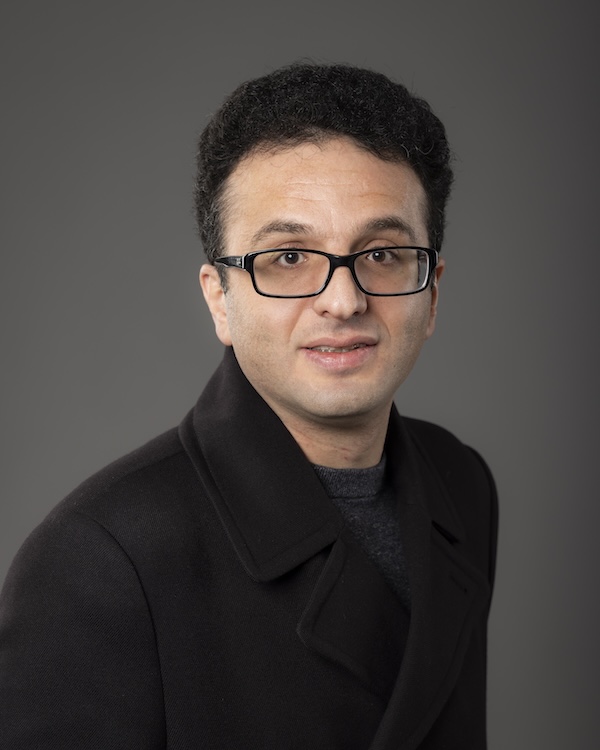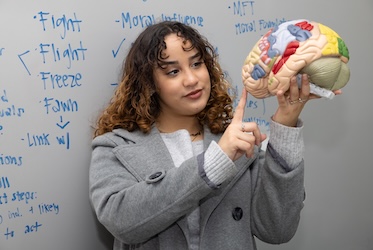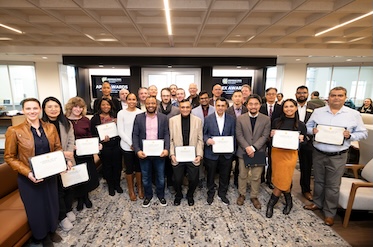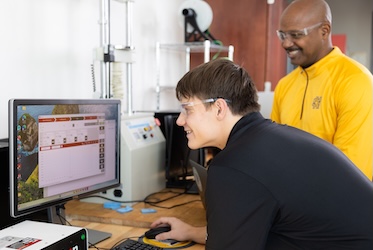

KENNESAW, Ga. | Jun 13, 2025

Topological states of matter are quantum phases that remain stable even in the presence of non-ideal conditions such as material disorder. They arise in complex materials and can also be created using tailored light. These states enable unique electrical and magnetic properties, with promising applications in quantum computing, advanced communications, and medical imaging.
Asmar’s research advances the discovery of novel out-of-equilibrium quantum states by harnessing periodic modulations in quantum materials. Moving beyond uniform light exposure, his work explores the largely uncharted realm of light interacting with inhomogeneous materials to access previously unreachable quantum phases.
By accounting for temperature effects and electron collisions, the project will deliver accurate, experimentally relevant predictions for controlling matter with structured fields. These insights will impact light-irradiated systems, strain engineering and open-system dynamics, offering a roadmap for experiments and future breakthroughs in quantum materials.
“This grant significantly expands research opportunities for KSU students,” said Asmar, assistant professor of physics. “They’ll be directly involved in the rapidly evolving field of theoretical condensed matter physics, positioning KSU at the forefront of innovation in quantum science and technology.”
With support from the grant, Asmar’s research will combine rigorous mathematical modeling and advanced simulations to uncover how light alters the properties of quantum materials. As a theoretical physicist, he predicts material behavior under complex light exposure, providing a powerful framework to guide experiments and enable precise control of quantum systems.
Asmar earned a grant from the National Science Foundation in 2022 to study interactions between light and matter while introducing undergraduates and community members to this area of condensed matter physics.
“My NSF grant led to key breakthroughs, including proof that vortex-like states can be generated in matter through light,” Asmar said. “Those results were instrumental in securing this Department of Energy grant. The work we’re undertaking now will lay the foundation for the research we will carry forward here at KSU.”
Asmar collaborates with Nancy Sandler, a professor of physics at Ohio University, where Asmar received his doctorate in 2015. The grant will help continue that collaboration, funding a graduate student there as well as a summer internship for undergraduate and graduate researchers. The grant will also fund a postdoctoral scholar as well as two undergraduate researchers at KSU.
In a banner year for KSU’s Department of Physics, Asmar’s recent Department of Energy grant adds to a series of major faculty achievements. In August 2024, professors Marco Guzzi and Nikolaos Kidonakis secured a $360,000 NSF grant for their work in theoretical particle physics at CERN. Earlier this year, associate professor Chetan Dhital and assistant professor of chemistry Madalynn Marshall received a $799,934 DOE grant to study magnetic materials and emerging technologies.
Physics students also made significant strides. Junior Casey Hampson conducted NSF-funded summer research at CERN, and junior Emily Manqueros earned top honors at the Birla Carbon Scholars Symposium, the first physics student to do so in the event’s 11-year history. Siam Sarower—a junior physics major and mentee of Asmar—earned two of the highest national honors for undergraduate scientists. In March, he became the first KSU physics student to receive the Barry Goldwater Scholarship, the most prestigious undergraduate award in STEM, for his research on space-time modulation in graphene. In May, he was named a student ambassador of the American Physical Society, reflecting both KSU’s outstanding research and growing leadership in the national physics community.
“The grant that Dr. Asmar has secured from the Department of Energy is yet another feather in the cap of the stellar recent performance of CSM’s Physics Department,” said Heather Koopman, dean of KSU’s College of Science and Mathematics. “We have world-class researchers, along with incredible undergraduate students doing research and winning awards – it’s the perfect combination that is exactly in tune with CSM’s aim of achieving national prominence in Undergraduate Research.”
The grant was one of 40 awarded nationally by the Department of Energy, totaling $31 million.
– Story by Dave Shelles

Kennesaw State student explores how trauma affects decision-making

Top researchers recognized for achievements at Apex Awards

Rising above challenges marks inspiring career of President's Award of Distinction recipient

Kennesaw State team innovates stronger 3D-printed structures through advanced simulations
A leader in innovative teaching and learning, Kennesaw State University offers undergraduate, graduate, and doctoral degrees to its more than 51,000 students. Kennesaw State is a member of the University System of Georgia with 11 academic colleges. The university's vibrant campus culture, diverse population, strong global ties, and entrepreneurial spirit draw students from throughout the country and the world. Kennesaw State is a Carnegie-designated doctoral research institution (R2), placing it among an elite group of only 8 percent of U.S. colleges and universities with an R1 or R2 status. For more information, visit kennesaw.edu.